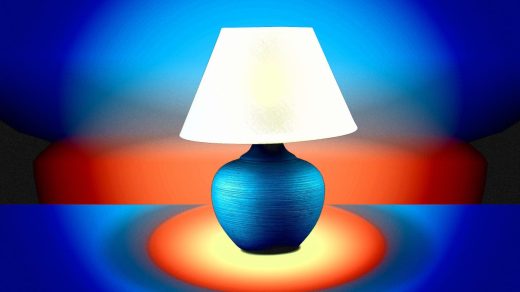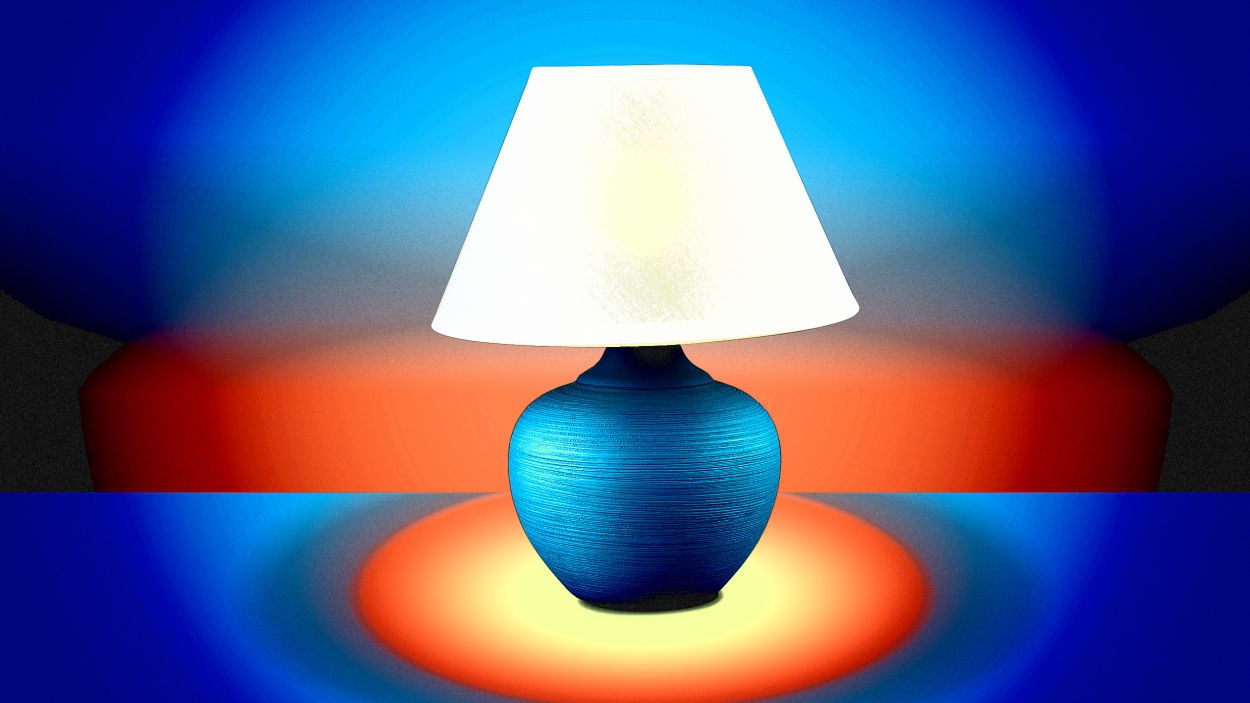This ‘simple’ coating could turn your lampshade into an air purifier
When you think about air quality, your mind probably first goes to the outdoors, where the air can be polluted by passing cars, coal plants, or wildfire smoke. But your indoor air is full of pollutants too, which can come from cooking and cleaning, building materials, and even the flame retardants on your couch. Now researchers have an inventive solution: a coating that turns regular lampshades into air purifiers, using the heat given off by light bulbs.
Typical air purifiers use filtration systems to remove pollutants from the air. But those systems just absorb the pollutants into the filter and don’t remove them completely, explains Minhyung Lee over email. Lee, a graduate student at South Korea’s Yonsei University, where the research is being done, presented these findings at a meeting of the American Chemical Society. Some other air purifiers use a catalyst to cause a chemical reaction against pollutants, destroying them and releasing the purified air back into the room. But that method requires a strong UV light, “which is dangerous and expensive,” Lee says.
Instead, researchers at Yonsei University found a way to use the heat given off by light bulbs as a catalyst against those pollutants. By coating the inside of the lampshades with a “catalyst paste” (made of titanium dioxide and a small amount of platinum), the bulb heats up the paste, activating the catalyst. That reaction then turns VOCs, or volatile organic compounds—gases that can cause nose and throat irritation, headaches, and even kidney and liver damage—into carbon dioxide and water. (The amount of carbon dioxide released is harmless, the researchers note.)
“We found that commonly used halogen or incandescent bulbs, prevalent in cafés and home interiors, emit a substantial amount of thermal energy,” Lee says. That energy can range from 100 degrees Celsius (212 degrees Fahrenheit) to 160 C (320 F), hot enough to activate a chemical reaction. Instead of just filtering out the pollutants, this lampshade air purifier is able to turn VOCs into harmless compounds, completely removing them from the air.
There are a variety of VOCs that could be inside your home: Furniture can give off formaldehyde, paint can emit acetaldehyde, and frying food generates benzene, toluene, ethylbenzene, and xylene. The biggest problem with these VOCs, Lee says, is that they’re not just harmful on their own, they’re also precursors to fine particulate matter—tiny particles that can be inhaled and have a host of their own health effects.
“VOCs that exist indoors are very small concentrations,” Lee says. “But if continuously inhaled, the concentration will greatly [get] bigger inside the human body. And even a small amount of VOCs can cause many bad effects, such as allergies, respiratory problems, and headaches.”
The lampshade air purifiers were tested at a higher concentration of VOCs than you’d typically find in your home, 10 parts per million (whereas indoors, most concentrations are less than 1 part per million), and were able to remove them completely.
Next, the researchers are hoping to make the same purification system using LED lights, which don’t get as hot as halogen and incandescent bulbs. (In fact, incandescent bulbs are actually being phased out in the U.S. in favor of more efficient light bulbs like LEDs.) They’re also considering adding copper to the coating instead of platinum, since copper-based catalysts are capable of breaking down VOCs, and copper itself is a disinfectant that could kill microorganisms in the air.
Prototypes are in the works in an effort to scale up the purifier, and “in the not-too-distant future,” according to Lee, the researchers are aiming to commercialize the lampshade-coating system. It’s not clear at this stage how easy it might be to apply the coating yourself, though Lee did say that the system is “remarkably simple and convenient.”
(12)



